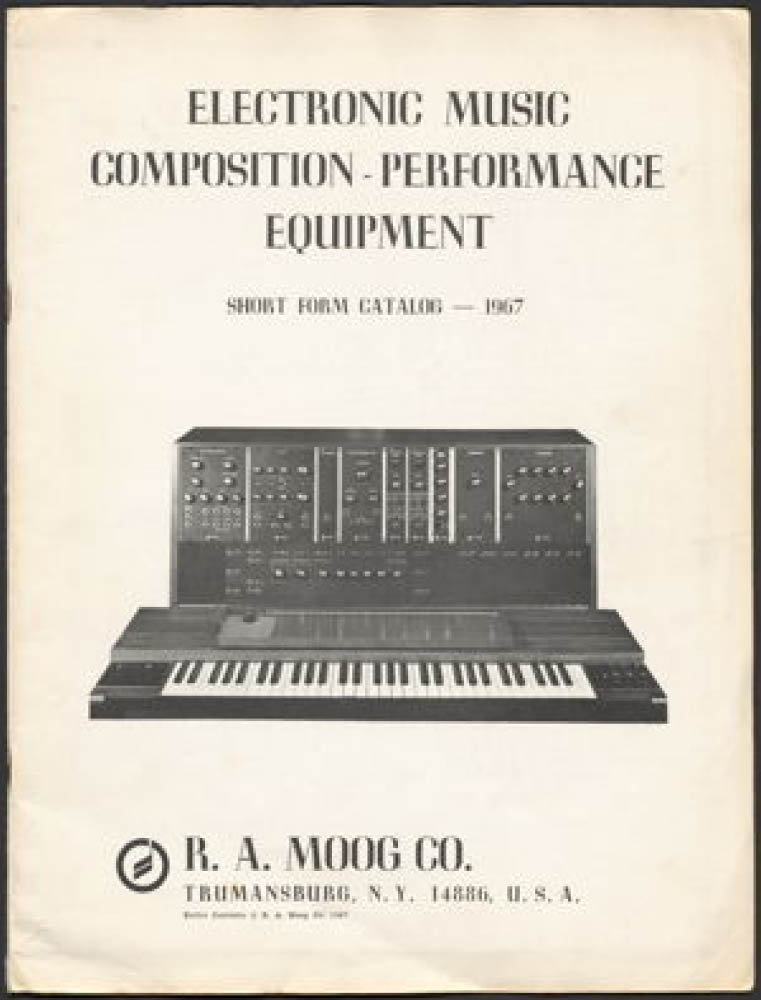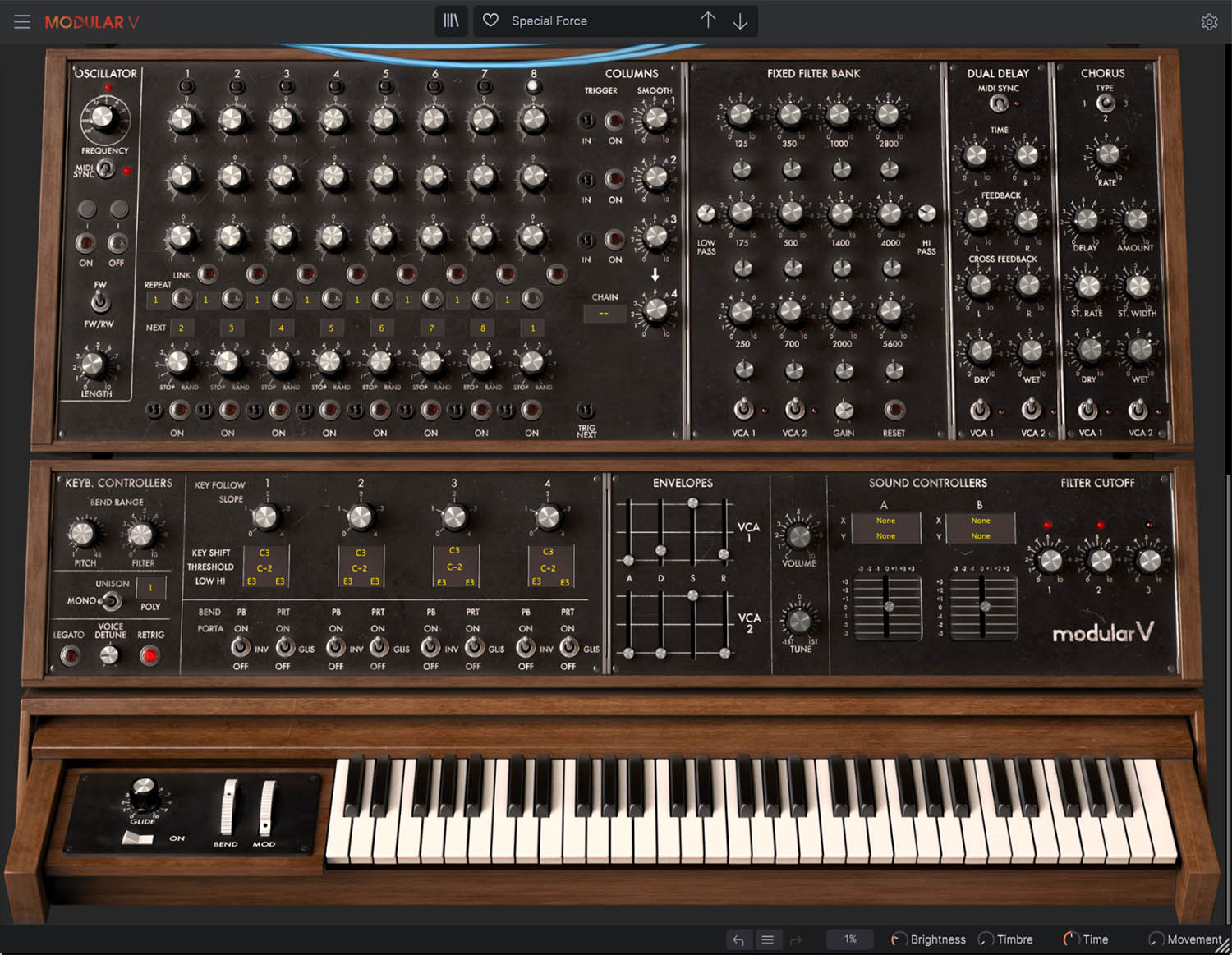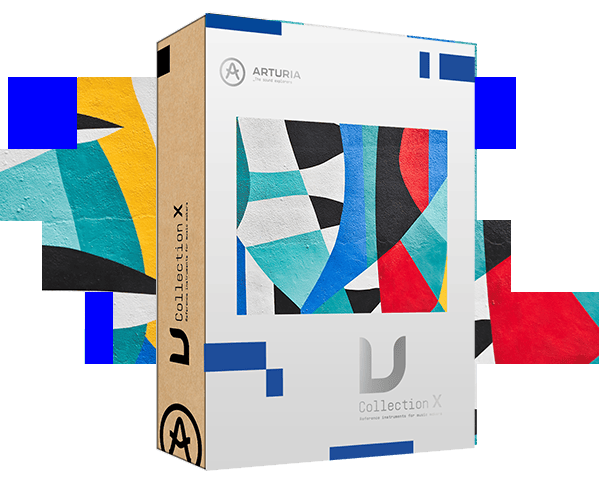Switched
on synthesis
The legacy that introduced the synthesizer to popular music, modeled to perfection and made even more magnificent.
Nothing sounds like a modular synth, and no modular synth is like the one that made it out of the studio and onto the stage to mesmerize audiences worldwide. Modular V has been brought to life with True Analog Emulation® modeling, giving you a sound no other modern synth or plug-in can touch. Developed in partnership with the original instrument’s inventor, it lets you enjoy the same sound design madness favored by pioneers from Tangerine Dream to Trent Reznor - all from the comfort of your DAW setup.
Ultimate Flexibility
Modular V’s huge selection of modules leaves it entirely up to you what happens to the sound - connect the dots and explore a true synthesis blank canvas.
Start With Presets
New to modular? Daunted by Modular V’s myriad of connections and controls? Take a shortcut to gigantic sound with its built-in library of expertly-designed presets.
It Sounds Real Because It Is
You don’t have to choose between the sound of hardware and the convenience of software. Modular V captures everything that made the original so satisfying to work with.
Go Offroad
Enjoy every unexpected result and get inspired with every tweak - Modular V is designed to encourage experimentation and total creative freedom.
Rhymes
with vogue
Electronic music synthesis captivated Wendy Carlos, Keith Emerson, Tangerine Dream, and even The Beatles. Early Modular systems from a beloved inventor are why.
Dr. Bob Moog is virtually synonymous with synthesizers. It was his modular designs — and a little help from his friends — that took synthesis out of the realm of esoterica and made it a popular tool for composers and performers across all musical styles.
A New Yorker born in 1934 with a background in piano, he produced Theremins in the 1950s after being impressed with Leon Theremin’s touchless instrument. Upon meeting composer Herb Deutsch, the two immediately hit it off and their collaboration produced the first voltage-controlled oscillator. Their first modular synth followed in 1964 and was the talk of the Audio Engineering Society convention. The influx of orders led to new modular systems, culminating in the I, II, and III in 1967.
Discover the history of Modular
Musical
Majesty
Modular V’s user interface is a tower of power.
Modular systems often spanned multiple cabinets. Modular V is so realistic that it does, too. Inspired by the largest offerings of the original maker, it combines historically authentic layout with the modern ergonomics you need.

_1
_2
_3
_4
_5
01. Patch It Like a Pro
Simply drag from one patch point to another to make cable connections. Destinations that work are highlighted in red.
02. Oscillator Army
Build thick, earth-shaking timbres with nine oscillators plus three Driver oscillators.
03. Truly Modular
Modules include all the audio and control signal jacks found on the originals and you can even “mult” cables in a single jack. Get as simple or as complicated as you want.
04. Swap ’Em Out
Select and configure a variety of filter, envelope, and modulation source modules across the top cabinet.
05. Bodes Well
Module choices include classic 24dB ladder as well as multimode filters, and even the rare and oft-misunderstood Bode Frequency Shifter.
Modular
Gone Modern
Go everywhere a hardware modular can – and a few places it can’t.
Needless to say, we’d be crazy not to take advantage of all the things it’s easier to do in software. We pumped up Modular V with features that fit it right into computer-based music workflows, while preserving all the best aspects of the modular experience.

_1
_2
_3
_4
_5
_6
01. MIDI Modular!
A modular synth where every control can respond to MIDI? Not on the classics. Not on today’s Euroracks. Only here.
02. Poly Pandemonium
Modulars were mainly played monophonically. Make Modular V poly with this switch — or multiply its oscillators with Unison mode.
03. Breadcrumbs
It’s challenging to pick up where you left off with hardware modulars. With Undo/Redo and Undo History, your sound design is safe and available in an instant.
04. X/Y Controllers
Two X/Y joystick controllers have patchable inputs for each axis. Of course they’re MIDI assignable, adding even more real-time performance control.
05. Standalone Volume Envelopes
Need quick volume envelopes with no patching required? We’ve built them right into Modular V to speed up your modular flow.
06. These Followers are Leaders
With four independent and patchable key followers, a run up or down the keyboard can produce complex musical results.
Écoutez-le
en situation
Like we said, modular synthesis can take you anywhere and Modular V can do it quickly. Here are just some of the places our artists and sound designers have gone. Where will you go?
Initialize Timbal
Dale's Demo
Dale Ong
A short demo sent by Dale Ong, from the USA, who worked for Bob Moog in the 80's. It was recorded (rendered in Sonar actually) using just 6 tracks, all Modular V with no external processing.
Me and Mgy V2
Ambient Field
Prats aka Patrick Wiklacz, krautrock and psychedelic style.
Demo Song by Mitsuru Sakau
Mitsuru Sakau
A Modular V demo song inspired by Isao Tomita, Claus Shulze, and Keith Emerson who is Mitsuru's idol. Many thanks to Mitsuru Sakaue
Jerusalem
Mateo Lupo
Inspired from the choral piece of Chariots of Fire (Vangelis).
Modular Funk
Jean-Michel Blanchet
A piece of funk music.
Fabrice Gabriel's Dreams
Fabrice Gabriel
This song was made with several instances of the Modular V, drums and a shaker. The only added effect is compression to limit extra dynamics, and sometimes eqs in the high frequencies to add some air to the sound.
Brandenburg Concerto
Gil Sicuro
A fragment of Bach's Brandenburg Concerto No. 3, 1st movement. Only one instance of Modular V was used, rendering track by track of a total of 22 audio tracks. No external EQ, compression or FX were used the sound is right as it comes from the Modular V
Travesia Sagrada 01
Jose Luis Suazo
Song made with Modular V and samples of sounds of the nature park in HONDURAS.
Artistscorner
PressClippings

Inclus dans
V collection
Les claviers de légende réinventés
Cet instrument fait aussi partie de la fameuse V Collection, qui regroupe de nombreux synthés de légende, d’orgues, de pianos et autres claviers qui ont fait l’histoire de la musique. Ils ont été modélisés avec les technologies les plus pointues pour un réalisme frappant, tout en bénéficiant de l’ajout de nouvelles options créatives. La V Collection met à votre disposition les meilleurs claviers de tous les temps, que ce soit en tant que plug-ins dans un DAW, ou en tant qu’instruments individuels autonomes sur scène.
Plus d’infos
Toutes les fonctionnalités
dont vous avez besoin

Les tutoriels intégrés détaillent chaque aspect de l’instrument, des différents paramètres aux conseils de nos designers sonores, pour que vous puissiez vous concentrer sur votre créativité. C’est simple comme bonjour !

L’Arturia Software Center vous sert à télécharger, organiser et mettre à jour tous vos logiciels d’Arturia au même endroit, ou encore à gérer toutes vos licences sur plusieurs appareils. Plus c’est simple, mieux c’est.

Nos instruments virtuels et nos plug-ins sont conçus pour s’intégrer facilement à votre installation. Quel que soit votre style, vous pouvez expérimenter tout en profitant d’une parfaite compatibilité avec les principaux DAW, aussi bien sur Windows que sur macOS.

Ne passez pas des heures à chercher le son que vous avez en tête. Le navigateur intelligent vous permet de trier les presets par mots-clés, par type d’instrument, style musical, etc. Vous pouvez même sauvegarder vos sons favoris pour les rappeler instantanément dès que vous en avez besoin.

Vous voulez profiter de nos émulations d’instruments classiques avec une immersion visuelle totale ? Vous préférez économiser un peu d’espace sur votre écran ? Les interfaces de tous les instruments virtuels d’Arturia peuvent être redimensionnées à la taille qui vous convient.

Les paramètres des instruments sont directement assignés aux commandes des claviers de la gamme KeyLab d’Arturia, mais ils fonctionnent aussi très bien avec d’autres contrôleurs MIDI. Vous bénéficiez ainsi de macros pour modifier instantanément le son, d’une intégration facile avec le DAW et d’un fonctionnement indépendant.
Le pouvoir de la TAE®
C’est la TAE®, notre technologie de modélisation analogique, qui permet de reproduire fidèlement les sonorités des instruments et des effets dont nous nous inspirons pour nos logiciels.
En reproduisant avec précision les caractéristiques des oscillateurs analogiques, des filtres et de l’écrêtage doux, nous conservons dans nos logiciels le charme du son propre aux machines analogiques, ainsi que leur caractère lié aux différents composants électroniques qui les constituent.
Plus d’infos
Galerie
Caractéristiques principales
All the parameters of the original modular synth:
- 9 oscillators
- 2 LFOs
- 3 filter slots
- 1 Noise Generator
- 6 envelopes
- 2 VCA
16 auxiliary VCAs with modulation inputs
24-step sequencer
1 filter bank (14 bandwidths available)
Stereo delay and chorus
12-stage phaser and ring modulator
Very accurate reproduction of the legendary 24dB/octave low-pass filter
Superb audio quality withTAE® engine
More than 500 presets, made by professional sound designers
Mono / polyphonic (up to 64 voices per instrument)
Soft-clipping function
Exigences techniques
Windows
- Win 10+ (64bit)
- 4 GB RAM
- Processeur quadricœur, 3,4 GHz (4,0 GHz Turbo-boost)
- 3 Go d'espace libre sur le disque dur
- Processeur graphique compatible avec l’OpenGL 2.0
- Ne fonctionne pas avec les processeurs ARM sous Windows
Configuration requise
- Logiciel standalone, plug-in VST, AAX, Audio Unit et compatibilité avec le NKS (DAW en 64 bits uniquement)





Apple
- Mac OS 11+
- 4 GB RAM
- Processeur quadricœur, 3,4 GHz (4,0 GHz Turbo-boost) ou processeur M1
- 3 Go d'espace libre sur le disque dur
- Processeur graphique compatible avec l’OpenGL 2.0
Compatible avec l’ASC
- L’Arturia Software Center est un outil qui vous permet d’installer, d’activer et de mettre à jour facilement nos logiciels.
Tous les noms de fabricants et de produits mentionnés sur cette page sont des marques commerciales appartenant à leurs propriétaires respectifs, lesquels ne sont en aucun cas associés ni affiliés à Arturia. Les marques commerciales d’autres fabricants sont utilisées aux seules fins d’identification des produits de ces marques, dont les caractéristiques et le son ont été étudiés durant le développement. Tous les noms des équipements, inventeurs et fabricants ont été uniquement inclus à titre illustratif et éducatif, et ne suggèrent en aucun cas une affiliation ni une approbation de la part des inventeurs ni des fabricants des équipements.
























